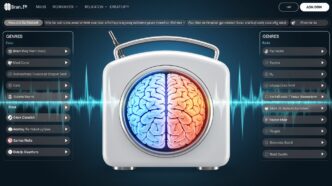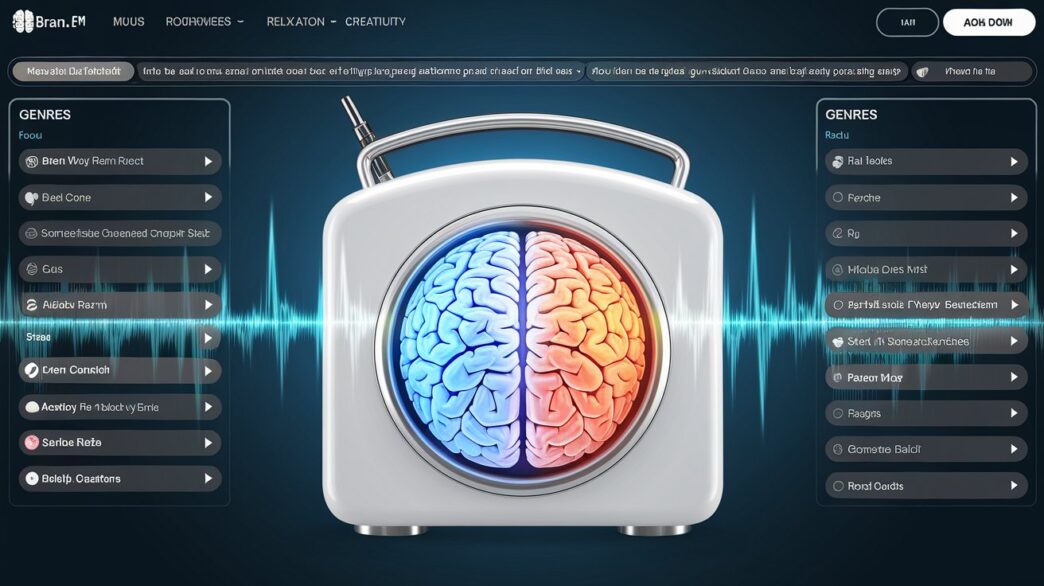Your brain works best with music—as long as it’s the right one. Instrumental sounds or unintelligible lyrics reduce distractions and help you stay focused. But what if there was a sound specifically designed to boost your productivity?
What is Brain.fm?
Brain.fm is a science-based music app for focus, relaxation, and sleep. Available for web , Android , and iOS , it uses AI to create soundtracks that stimulate your brain to get into the optimal mental state for each task.
Unlike regular playlists, Brain.fm music is designed with specific modulations that synchronize brain activity. EEG and fMRI studies show that this type of music improves concentration within minutes.
What does Science say about music and productivity?
Studies published in the most respected scientific journal, Nature , show that soundtracks with specific modulations can influence brain waves and improve focus, creativity and cognitive performance.
After all, the brain is an electrical and chemical machine, operating through neural signals that follow rhythmic patterns. Each of these frequencies has a specific role, influencing everything from sleep to hyper-concentration. But what happens when you put on a pair of headphones and play a song?
The role of the prefrontal cortex in concentration
When you’re focused, a specific region of the brain takes over: the prefrontal cortex . This area, located just behind the forehead, is responsible for functions such as planning, logical reasoning, and attention control . In other words, it’s the “CEO” of your brain, coordinating tasks and filtering out distractions.
The problem is that the prefrontal cortex gets tired easily . Long working hours, constant notifications, and a noisy environment can overwhelm it, reducing your ability to concentrate. This is where music comes in—but not just any music.
EEG and fMRI studies
Unlike regular music, Brain.fm tracks have been tested with electroencephalography (EEG) and functional magnetic resonance imaging (fMRI) to measure their real-world impact on the brain. Studies show that Brain.fm tracks:
- They increase the activity of the prefrontal cortex , responsible for critical thinking and planning.
- They promote neural synchronization , facilitating communication between different brain areas.
- They avoid distractions , creating a sound environment that sustains attention without stealing focus.

The research explains that rapid amplitude modulation in sound can improve attention, especially in people with concentration difficulties, such as those with ADHD. This is because these modulations reinforce natural brain wave patterns, helping to maintain focus for longer.
Brainwaves and concentration: the role of the right frequency
The brain operates in different frequency bands , each associated with a specific mental state:
- Delta (0.5-4 Hz) – Deep sleep and regeneration
- Theta (4-8 Hz) – Relaxation and creativity
- Alpha (8-12 Hz) – Meditation and flow state
- Beta (12-30 Hz) – Focus and logical reasoning
During activities that require concentration, such as studying, writing or programming, the brain works mainly in beta waves.
Brain.fm, for example, uses sound patterns designed to induce and maintain this frequency, making it easier to enter the state of intense focus.
Brain.fm vs. binaural beats: what’s the difference?
Many people confuse Brain.fm with binaural beats , but they are different technologies.
| Feature | Brain.fm | Binaural Beats |
|---|---|---|
| Impact on the brain | It acts on the prefrontal cortex , directly linked to productivity | Affects the brain stem , with no proven effect on concentration |
| Need for headphones | Works with any headphones or even speakers | Requires specific stereo headphones |
| Method | Dynamic modulations embedded in music | Frequency difference between ears |
| Scientific basis | Tested with EEG, fMRI and clinical studies | Little solid scientific evidence |
While binaural beats work on the brain stem and require specific headphones, Brain.fm does not depend on the type of equipment and is scientifically proven .













